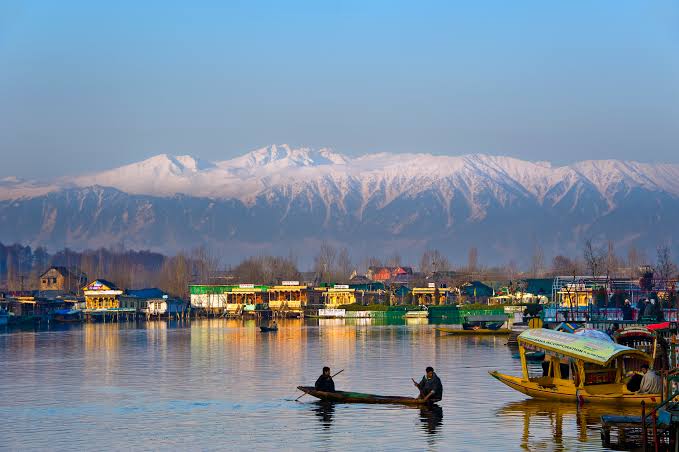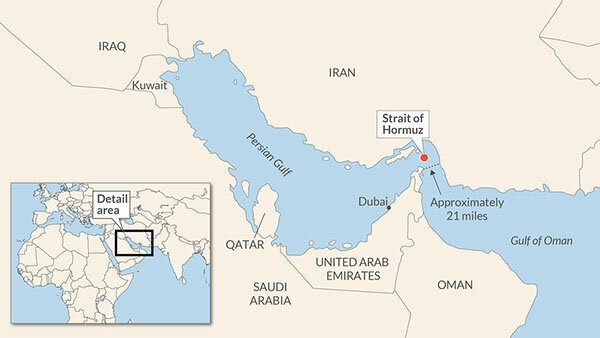Restructuring of Railway Board
Why in News
The Union Cabinet has approved restructuring of the Railway Board.
- The number of Railway Board members will be reduced to five from existing eight.
- The eight railway services will be integrated into a central service called the Indian Railway Management Service (IRMS). All employees at the management level will come into the Railways through one service — the IRMS.
- The Indian Railways is organised into service departments such as traffic, civil, mechanical, electrical, signal & telecom, stores, personnel, and accounts.
- This is in line with the recommendations of numerous committees, notably Rakesh Mohan (2001) and the Bibek Debroy panel (2015).
Railway Board
- The Railway Board was constituted in 1905 as the chief administrative and executive body to assist the Minister of Railways.
- It consists of a Chairman and seven members from different service departments such as traffic, civil, mechanical, electrical and signal & telecom.
Restructured Board
- The Board will now consist of five members – Chairman, who will act as a CEO, along with four members responsible for infrastructure, operations and business development, rolling stock and finance.
- There will also be a Directorate General - Human Resources (DG - HR) under the Chairman. The Board will also have some independent members, who will be highly distinguished professionals.
- The modalities and unification of the services will be worked out by the Ministry of Railways in consultation with the Department of Personnel and Training (DoPT).
- The Railways will also upgrade the 27 General Managers (GMs) working at zonal levels to secretary level grade – highest in the government of India.
Objective
- The integration of service departments will cut the clutter in decision making and organise the working of the Railway Board and its zones along more commercial lines. This will also end departmentalism.
- The lack of coordination between the maintenance and traffic staff is said to have played a role in the Khatauli rail mishap near Muzaffarnagar in August 2017.
- It will streamline railway operations and provide flexibility the way Railways deploy people. It is a step towards corporatisation.
- Corporatisation refers to the restructuring or transformation of a state-owned asset or organization into a corporation.
Initial Public Offering (IPO)
Why in News
Fund raising through Initial Public Offering (IPO) in 2019 stood at Rs 12,362 crore, lowest since 2014 when companies raised Rs 1,201 crore through IPOs.
- However, fund-raising through Offers-For-Sale (OFS) and Qualified Institutional Placements (QIPs) remained higher in 2019 as compared to 2018.
- The overall amount raised through Infrastructure Investment Trusts (InvITs) and Real estate Investment Trusts (ReITs) was 127% more than in previous year.
Initial Public Offering
- IPO is the selling of securities to the public in the primary market.
- Primary market deals with new securities being issued for the first time. It is also known as the new issues market.
- It is different from secondary market where existing securities are bought and sold. It is also known as the stock market or stock exchange.
- It is when an unlisted company makes either a fresh issue of securities or an offer for sale of its existing securities or both for the first time to the public.
- Unlisted companies are companies that are not listed on the stock exchange.
- It is generally used by new and medium-sized firms that are looking for funds to grow and expand their business.
Offer For Sale
- Under this method, securities are not issued directly to the public but are offered for sale through intermediaries like issuing houses or stock brokers.
- In this case, a company sells securities enbloc at an agreed price to brokers who, in turn, resell them to the investing public.
Qualified Institutional Placements
- A QIP is a capital raising tool wherein a listed company can issue equity shares, fully and partly convertible debentures, or any security (other than warrants) that is convertible to equity shares.
- A listed company is a firm whose shares are listed (quoted) on a stock exchange for public trading. It is also called quoted company.
- It is a method of private placement whereby a listed company can issue shares or convertible securities to a select group of investors.
- But unlike in an IPO, only institutions or Qualified Institutional Buyers (QIBs) can participate in a QIP issuance.
- QIBs include mutual funds, domestic financial institutions such as banks and insurance companies, venture capital funds, foreign institutional investors, and others.
Infrastructure Investment Trust
- InvIT is a collective investment scheme similar to a mutual fund, which enables direct investment of money from individual and institutional investors in infrastructure projects to earn a small portion of the income as return.
- The InvITs are regulated by the SEBI (Infrastructure Investment Trusts) Regulations, 2014.
Real estate Investment Trust
- ReITs are securities linked to real estate that can be traded on stock exchanges once they get listed.
- The structure of ReITs is similar to that of a mutual fund. Just like mutual funds, there are sponsors, trustees, fund managers and unit holders in ReITs.
- However, unlike mutual funds, where the underlying asset is bonds, stocks and gold, ReITs invest in physical real estate.
- The money collected is deployed in income-generating real estate. This income gets distributed among the unit holders. Besides regular income from rents and leases, gains from capital appreciation of real estate also form an income for the unit holders.
Solar Eclipse
Why in News
On 26th December 2019, India experienced an Annular Solar eclipse of 0.97 magnitude, with 3 minutes and 39 seconds’ maximum duration of totality.
- Parts of Kerala, Karnataka and Tamil Nadu experienced the full glimpse of the “Ring of Fire” solar eclipse.
- The ‘ring of fire’ is a characteristic of the annular solar eclipse. It causes the sun to look like a ring (annulus) and hence the name annular eclipse.
- Cheruvathur in Kasaragod district, Kerala is one of the three places in the world where the solar eclipse was seen most clearly.
- Partial phases of the solar eclipse were visible from all over the country in varying magnitude depending upon the geographical position.
- This annular solar eclipse was also visible from Saudi Arabia, Qatar, United Arab Emirates, Oman, Sri Lanka, Malaysia, Indonesia, Singapore, Northern Mariana Islands, and Guam.
Eclipse Magnitude
- Eclipse magnitude is the fraction of the Sun’s diameter which is covered by the Moon.
- It is strictly a ratio of diameters and should not be confused with eclipse obscuration, which is a measure of the Sun’s surface area covered by the Moon.
- Eclipse magnitude may be expressed as either a percentage or a decimal fraction (e.g., 50% or 0.50).
- By convention, its value is given at the instant of greatest eclipse.
Solar Eclipse
- A solar eclipse is a phenomenon that occurs when the moon comes in the way of the sun’s light. The moon's shadow casts itself on Earth, blocking out the sun's light (as seen from Earth).
- The moon's shadow has two parts: a central region (umbra) and an outer region (penumbra). Depending upon which part of the shadow passes over the Earth, one of three types of solar eclipses could be observed:

- Total Solar Eclipse- The entire central portion of the sun is blocked out by the moon.
- Partial Solar Eclipse- Only part of the sun's surface is blocked out.
- Annular Solar Eclipse- The sun is covered in such a way that only a small ring-like sliver of light is seen from the sun's disc. This ring is known as the ring of fire.
- An annular eclipse happens when the moon is farthest from Earth. As the moon is farther away from Earth, it seems smaller and is unable to block the entire view of the sun, because of which the ring-like structure could be observed.
UGC Issues Norms for Ethics in Higher Education
Why in News
Ministry of Human Resource Development (MHRD) has adopted the Higher Education Quality Improvement Programme Mandate to improve the quality in higher educational institutions.
- The Quality Mandate was developed by the University Grants Commission (UGC) which contains 5 documents covering the 5 verticals of Quality Mandate-
- Evaluation reforms
- Eco-friendly and sustainable university campuses
- Human values & professional ethics
- Faculty induction
- Academic research integrity
Key Points
- The quality mandate aims at evolving higher education system to equip the country's next generation with vital skills, knowledge and ethics for leading a rewarding life.
- Student evaluation plays a crucial role in improving the quality of Higher Education in the country.
Five Documents on 5 verticals of Quality Mandate
- Evaluation reforms: Under this, the report ‘Evaluation Reforms in Higher Educational Institutions in India’ has been published in order to make student assessment more meaningful, effective and linked to ‘Learning Outcomes’.
- Eco-friendly and Sustainable University Campuses: The SATAT - Framework for Eco-Friendly and Sustainable Campus development in Higher Educational Institutions encourages universities to adopt reflective policies and practices to enhance the environmental quality of the campus and to adopt sustainable and green methods in its future.
- Human Values & Professional Ethics: A policy framework ‘MulyaPravah – Guidelines for Inculcation of Human Values and Professional Ethics in Higher Educational Institutions’ has been developed to discuss and streamline the process that helps to infuse the culture of human values and ethics in educational institutions.
- The guidelines for values and ethics in higher education call for students to-
- Observe modesty in their overall appearance and behaviour.
- Maintain good health and refrain from any kind of intoxicants.
- Maintain harmony among students belonging to different socio-economic status, community, caste, religion or region.
- The guidelines for values and ethics in higher education call for students to-
- Faculty Induction: The guidelines for Guru-Dakshta – A guide to Faculty Induction Programme (FIP) will fulfill its main objective to sensitise and motivate the faculty to adopt learner centred approaches, Information and Communication Technology (ICT) integrated learning and new pedagogic approaches to teaching-learning, assessment tools in higher education.
- Academic Research Integrity: UGC is putting up efforts for setting up a Consortium for Academic and Research Ethics (UGC-CARE) to continuously monitor and identify quality journals across disciplines. It will be useful to create more awareness and help the cause of promoting academic integrity and ethical publishing.
University Grants Commission
- It came into existence on 28th December, 1953 and became a statutory organization of the Government of India by an Act of Parliament in 1956, for the coordination, determination and maintenance of standards of teaching, examination and research in university education.
- The head office of the UGC is located in New Delhi.
Earliest Sanskrit Inscriptions in South India found in A.P.
Why in News
The Archaeological Survey of India (ASI) has discovered the earliest Sanskrit inscription in South India which is also an earliest epigraphic evidence (Epigraphy is the study of ancient inscriptions) for the Saptamatrika cult.
- Saptamatrikas are a group of seven female deities worshipped in Hinduism as personifying the energy of their respective consorts.
- Another inscription in Prakrit language and of Brahmi characters belonging to the 1st century A.D. was also found.
Key Points
- Inscriptions related to Saptamatrika: The found inscription records the construction of a Prasada (temple), a mandapa and consecration of images by a person named Kartika at the temple of Goddess Saptamatrika at Tambrape.
- Location: Tambrape is the ancient name of Chebrolou, Andhra Pradesh.
- Earlier References to Saptamatrika: Earlier references to Saptamatrika worship have been found in the early Kadamba copper plates and the early Chalukyas and Eastern Chalukya copper plates dated around 600 A.D.
- Language and Characters: All the available records proved that the found inscription (also known as Chebrolu inscription) is in Sanskrit and in Brahmi characters.
- Issued by: Satavahana king Vijaya in 207 A.D.
- So far the Nagarjunakonda inscription of Ikshavaku king Ehavala Chantamula issued in the 4th century A.D. was considered the earliest Sanskrit inscription in South India.
Satavahanas
- In the Deccan, the Satavahanas established their independent rule after the decline of the Mauryas. Their rule lasted for about 450 years.
- They were also known as the Andhras.
- The Puranas and the Nasik and Nanaghad inscriptions remain important sources for the history of Satavahanas.
- The founder of the Satavahana dynasty was Simuka. The greatest ruler of the Satavahana dynasty was Gautamiputra Satakarni.
- There was remarkable progress in the fields of trade and industry during the Satavahana rule. The greatest port of the Satavahanas was Kalyani on the western Deccan and Gandakasela, Ganjam on the east coast were the other important seaports.
- The Satavahanas patronized Buddhism and Brahmanism. Brahmanism was revived by the Satavahanas along with the performance of asvamedha and rajasuya sacrifices.
- They also patronized the Prakrit language and literature.
Directorate of Revenue Intelligence (DRI)
Why in News
The Ministry of Finance has released a postage stamp to commemorate the distinguished service and glorious contribution by the Directorate of Revenue Intelligence (DRI) in protecting the nation.
- The DRI is the apex anti-smuggling agency of India, working under the Central Board of Indirect Taxes & Customs, Ministry of Finance, Government of India.
- The Central Board of Excise and Customs (CBEC) was renamed as the Central Board of Indirect Taxes and Customs (CBIC) in 2018 after the roll out of Goods and Services Tax (GST). CBIC deals with the tasks of formulation of policy concerning levy and collection of Customs, Central Excise duties, Central Goods & Services Tax and Integrated GST, prevention of smuggling.
- It is tasked with detecting and curbing smuggling of contraband, including drug trafficking and illicit international trade in wildlife and environmentally sensitive items, as well as combating commercial frauds related to international trade and evasion of Customs duty.
- The DRI has also been designated as the lead agency for Anti-Smuggling National Coordination Centre (SCord).
- It was constituted on 4th December, 1957.
Second Edition of Eat Right Mela
Why in News
Recently, Union Minister of Health & Family Welfare inaugurated the 2nd edition of Eat Right Mela in New Delhi.
Key Points
- Eat Right Mela is organised by Food Safety and Standards Authority of India (FSSAI).
- It is an outreach activity for citizens to nudge them towards eating right. It is organised to make citizens aware of the health and nutrition benefits of different types of food.
- The PURPLE Book, a handbook on diets for diseases was also launched.
- It provides general guidelines for hospitals on suitable diets for common medical conditions such as diabetes, hypertension, cancer, gut disorders etc. in a simple format and has been developed and vetted by experts in the field of food and nutrition.
- Network for Scientific Co-operation for Food Safety and Applied Nutrition (NetSCoFAN) was also launched.
- It is a network of research & academic institutions working in the area of food & nutrition along with the NetSCoFAN directory, covering detailed information of various heads/Directors and lead scientists of lead and associated partnering institutions.
- It would comprise of eight groups of institutions working in different areas viz. biological, chemical, nutrition & labelling, food of animal origin, food of plant origin, water & beverages, food testing, and safer & sustainable packaging.
- It would identify research gaps in respective areas and collect, collate and develop database on food safety issues for risk assessment activities.
- The importance of ‘Save Food Share Food’ was emphasised.
- In this context, Indian Food Sharing Alliance (IFSA) seeks to reduce food waste and hunger and to feed the needy and hungry with surplus food through structured systems.
Khond Tribe
- Khond are people of the hills and jungles of Odisha state.
- They speak Kui and its southern dialect, Kuwi, of the Dravidian language family.
- Most Khond are now rice cultivators, but there are still groups, such as the Kuttia Khond, who practice slash-and-burn agriculture.
- Niyamgiri hills in Odisha are inhabited by the Dongria Khond, a Particularly Vulnerable Tribal Group.
Dal Lake
- Dal is a lake in Srinagar, the capital of the Union Territory of Jammu and Kashmir. Dal Lake is a misnomer as Dal in Kashmiri means lake.

- It is integral to tourism and recreation in Kashmir and is named the “Jewel in the crown of Kashmir” or “Srinagar’s Jewel”.
- It is also an important source for commercial operations in fishing and water plant harvesting.
- It covers an area of 18 square kilometres and is part of a natural wetland including its floating gardens.
- The floating gardens, known as “Raad” in Kashmiri, blossom with lotus flowers during July and August.
- The wetland is divided by causeways into four basins; Gagribal, Lokut Dal, Bod Dal and Nagin. Lokut-dal and Bod-dal each have an island in the centre, known as Rup Lank (or Char Chinari) and Sona Lank respectively.
- The houseboats (Shikaras) are closely associated with Dal Lake which provide accommodation to tourists in Srinagar.
Joint Naval Exercise by China, Russia and Iran
Why in News
- China, Russia and Iran to hold joint naval drills from December 27 to 30 to deepen exchange and cooperation between the navies of the three countries.
- The exercise is launched from the southeastern port city of Chabahar in the Gulf of Oman and is aimed at boosting the security of the region’s waterways.
- The Chabahar port has been jointly developed by India, Iran, and Afghanistan.
- It is a part of “normal military cooperation” between the three countries.
- During the exercise, China would deploy its guided-missile destroyer — the “carrier killer” for its array of anti-ship and land-attack cruise missiles.
- The exercise comes in the backdrop of the US withdrawal from the 2015 nuclear deal and escalated sanctions on Iran by the USA.

